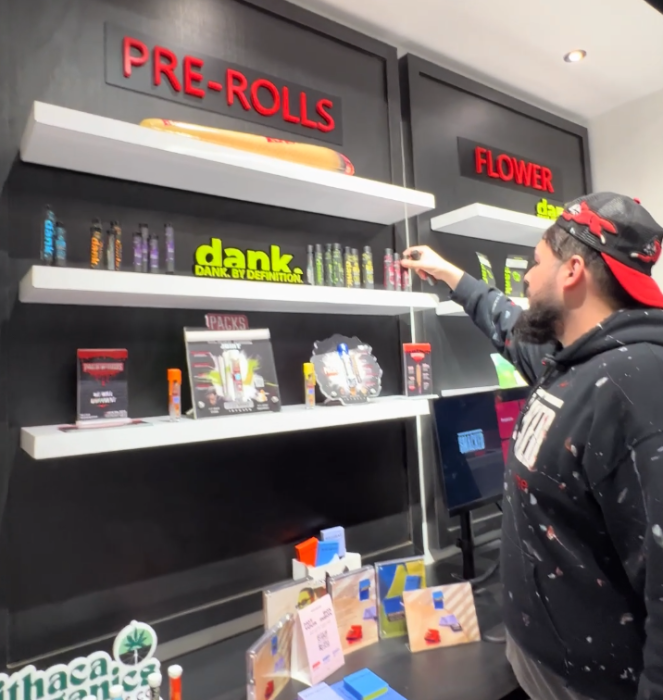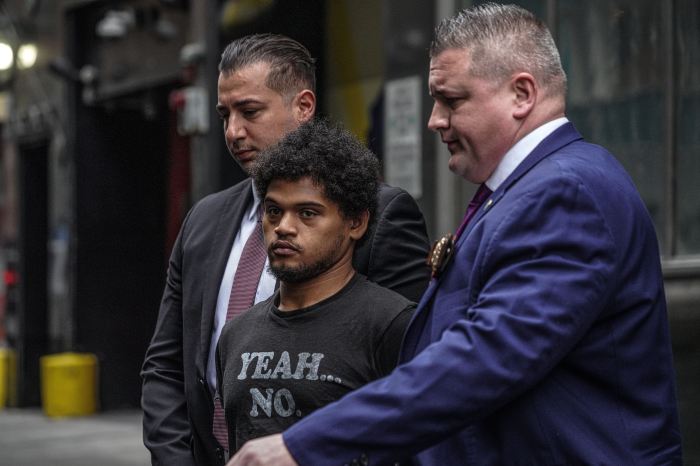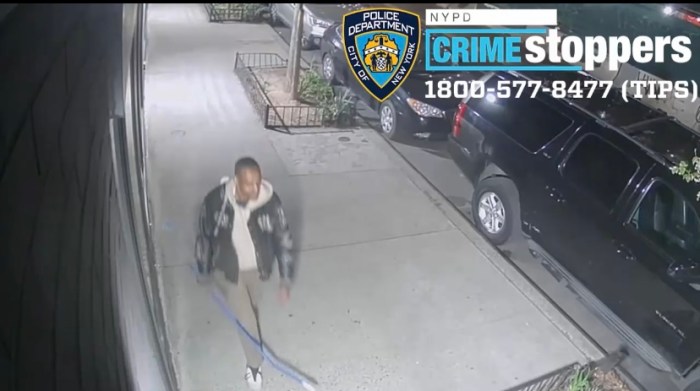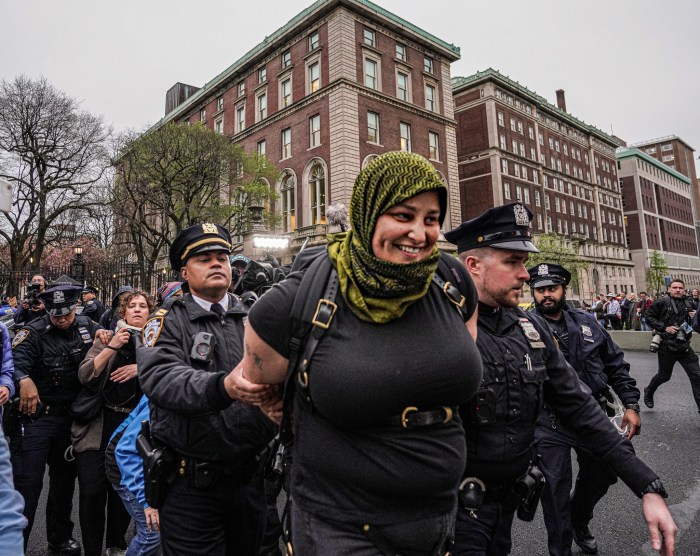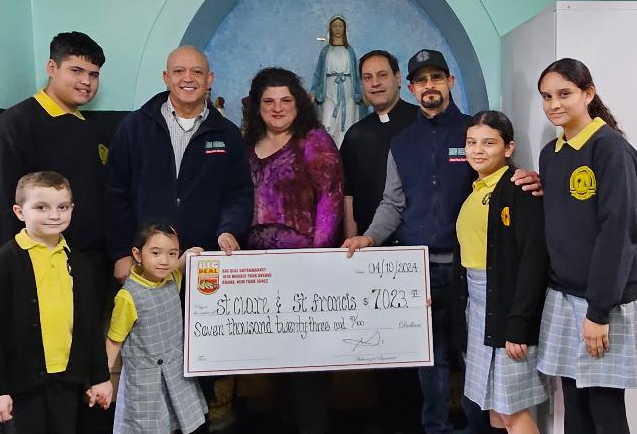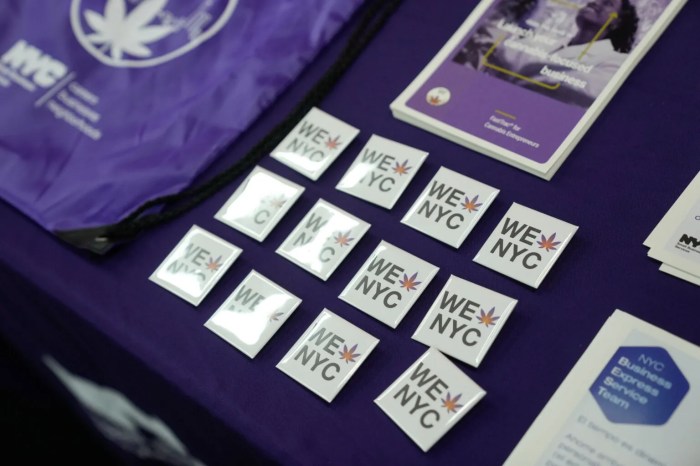-
 Earth Cafe
Earth Cafe
2578 Broadway
The relaxing vibe at this European-style cafe encourages lounging with a latte and a novel or diligent studying for exams. Outdoor seating is perfect for the hotter days, and the kitchen includes all the cafe staples like salads, sandwiches, and avocado toast.
646-964-5167
Awadh
2588 Broadway
This local Indian spot serves more than just chicken tikka masala, including coconut curry with prawns and Malai lobster masala. Reservations are recommended on busier nights.
Buceo 95
201 W. 95th St.
An upscale tapas joint steps the 96th Broadway subway station. It gets busy on weekends, but not so packed that you will struggle to chat with dining companions over croquettes and other traditional Spanish dishes.
” data-id=”112253704″ data-link=”https://amnewyork.wpengine.com/wp-content/uploads/2019/10/23185_image.jpg” class=”wp-image-1.12253704″/>Photo Credit: Jeremy Bales -
 Gabriela’s Restaurant and Tequila Bar
Gabriela’s Restaurant and Tequila Bar688 Columbus Ave.
In addition to classic Mexican cuisine and outdoor seating for warm nights, this family-owned restaurant and bar features more than 150 bottles of tequila.
Whispers Restaurant Bar and Lounge
210 W. 94th St.
This new Latin bar has something for everyone, including poetry on Tuesdays, ladies night on Thursdays, and sports on Sundays, along with 18 wines and 53 liquors.
Vino Levantino
210 W. 94th St.
An Upper West Side gem serving Levant and Mediterranean fare with rustic ambience. The brunch menu features specialties like Burekas, or puff pastries stuffed with feta and eggplant.
” data-id=”112254561″ data-link=”https://amnewyork.wpengine.com/wp-content/uploads/2019/10/24811_image.jpg” class=”wp-image-1.12254561″/>Photo Credit: Jeremy Bales -
 Chocolate Works
Chocolate Works
641 Amsterdam Ave.
This chocoholic’s paradise offers cocoa-based gift baskets and party favors for any occasion. The store also includes space for hosting on-site parties, where attendees can create their own chocolate treats.
AlbeeBaby
715 Amsterdam Ave.
This family-run business has served the moms and dads of the West 90s since 1933. Whether it’s furniture, clothes, strollers or toys, any of your children’s needs can be found here.
Columbus Wine and Spirits
730 Columbus Ave.
Look no further if you need help picking out anything from a nice red to a Single Malt Scotch for a dinner party or your own enjoyment. Owner Neil Weinstock’s encyclopedic knowledge will help you find the perfect bottle.
” data-id=”112254559″ data-link=”https://amnewyork.wpengine.com/wp-content/uploads/2019/10/25695_image.jpg” class=”wp-image-1.12254559″/>Photo Credit: Jeremy Bales -
 97th Street Greenmarket
97th Street GreenmarketColumbus Avenue and West 97th Street
For the past 25 years, this farmer’s market has provided the Upper West Side community with local produce and handmade products. Open every Friday year-round, purveyors can pick up a variety of fruits, meats and freshly-baked artisanal breads.
Symphony Space
2537 Broadway
Founded by Isaiah Sheffer and Allan Miller in 1978, this historic performance space has offered patrons the chance to see a variety of productions, including theater, film, dance and music.
Central Park
Entrances at 90th, 93rd, and 96th streets on Central Park West
A morning run or walk with the dog in this famous park is a major perk for many in the neighborhood.
” data-id=”112253702″ data-link=”https://amnewyork.wpengine.com/wp-content/uploads/2019/10/14483_image.jpg” class=”wp-image-1.12253702″/>Photo Credit: Jeremy Bales -
 Trains:
Trains:1, 2, 3 to 96th Street and Broadway
B, C to 96th Street and Central Park West
Buses:
M5, M7, M10, M11, M96, M104, M106
” data-id=”112254558″ data-link=”https://amnewyork.wpengine.com/wp-content/uploads/2019/10/14486_image.jpg” class=”wp-image-1.12254558″/>Photo Credit: Jeremy Bales -
 Median sales price: $$1,075,000
Median sales price: $$1,075,000
Number of units on market: 682
Median rental price: $3,495
Number of rentals on market: 2,747
(Source: StreetEasy)
” data-id=”112254556″ data-link=”https://amnewyork.wpengine.com/wp-content/uploads/2019/10/14488_image.jpg” class=”wp-image-1.12254556″/>
Photo Credit: Jeremy Bales -
 A landmarked house of God at Central Park West and 96th Street recently avoided becoming a house of condominiums.
A landmarked house of God at Central Park West and 96th Street recently avoided becoming a house of condominiums.On June 2, the Board of Standards and Appeals denied a bid from the Northside Development Group, the current owner of the property who filed the proposal under the name 361 Central Park West LLC, for a zoning variance to allow developers to convert the interior of the landmarked church into 34 luxury condos, along with space for “medical offices or some kind of community use,” according to Mitchell Korbey, a lawyer at Herrick, Feinstein LLP, who represented the developer.
The church was built in 1903 and was granted landmark status by the city Landmarks Preservation Commission in 1974. Northside Development Group, owned by Brooklyn investor Joseph Brunner, bought the property in 2014.
To go through with the project, the bid first needed an approval vote from the LPC, which is received in March 2015. However, because the renovation would violate several regulations in the local zoning law, the developer also needed to obtain approval from the Board of Standards and Appeals.
Brunner could not be reached for comment.
Kate Wood, president of Landmark West!, a nonprofit group that advocates the preservation of historic buildings, said community members were thrilled that the BSA, which she said typically sides with developers, voted against the proposal.
“It’s overdevelopment, and the kind that destroys public assets,” Wood said about the developer’s plan. “[Historic buildings] are valuable resources in the city being exploited.”
Ryan Singer, executive director of the BSA, said one of the reasons the board rejected the developer’s plan is because it thought it could have designated more space for community use.
Manhattan Community Board 7 in May also voted against the proposal, although community board votes are purely suggestive and hold no legislative power.
Miki Fiegel, a member of CB7’s preservation committee, said developer’s plan aimed to create new windows in the structure, “which would ruin the facade.”
” data-id=”112254544″ data-link=”https://amnewyork.wpengine.com/wp-content/uploads/2019/10/14490_image.jpg” class=”wp-image-1.12254544″/>Photo Credit: Jeremy Bales
On a sunny day in the Upper West Side neighborhood between West 90th and 99th streets, you’re likely to pass a sea of sweat-beaded joggers, dogs with pink leashes strutting tiny legs and chirping toddlers on neon scooters rolling alongside parents.
“I think that what you find [in the West 90s] is it’s really like a small town in a lot of ways,” said Aaron Biller, 62, area resident of 31 years and president of Neighborhood in the Nineties, a nonprofit neighborhood advocacy group founded in 1971. “You find that there are various enclaves up here. People know each other. It’s acceptable to say ‘hello’ on the streets.”
What was once a community of starving artists in the ’70s and ’80s, the West 90s grew into a suburban escape within Manhattan. Sandwiched between Central and Riverside parks, the area offers residents reprieves of space and greenery hard to find in the rest of the city.
Muhamed Brucaj, who works as a doorman at the Cornwall, a 12-story co-op built in 1910 at 225 W. 90th St., has watched the streets for the past 20 years while on the job. The neighborhood, in his eyes, has cleaned up its act.
“Over the past 10 years, it’s become much quieter and much more residential,” he said.
Matt Berkson, 41, moved to the Upper West Side from the Upper East five years ago with his girlfriend. For him, it’s a comparable to the East Side, although with more amenities.
“I wanted to try something new,” Berkson said, referring to the decision to move. “It’s kind of similar, although you’ve got Riverside Park and Central Park West, and two subway stations. It’s a nice little gem. We just got a dog too, and here it’s like having a kid.”
The area is also known for its kid-friendliness.
“The neighborhood is flushed with schools,” noted Chris James, a real estate sales broker with Citi Habitats and area resident of more than 45 years. “I’m surrounded by three, just on one block.”
Educational institutions in the area include the historic, private Trinity School, which teaches K-12 and was first founded in 1709, and the private Columbia Preparatory & Grammar School on 93rd Street between Columbus Avenue and Central Park West, also K-12, along with P.S. 333 Manhattan School for Children, which is K-8.
For dining, the West 90s are home to numerous restaurants.
Mikie Fiegel, a member of Community Board 7 and a West 90s resident since 1978, said the original Carmine’s on Broadway between West 90th and West 91st streets, which opened in 1990, is her favorite Italian spot.
Amsterdam Avenue boasts several popular newcomers, including the Halal Guys eatery at 720 Amsterdam Ave., which opened in 2014.
But the amenities here, like with most of Manhattan, come with rising home prices.
The housing stock in the area is dependent on which part of the street you’re living on. Along the main avenues, rows of pre-war buildings fill the horizon, while the side streets are dominated by brownstones.
According to StreetEasy, the median sales price in the West 90s was $780,000 in 2009. By 2013, it rose to $900,000, and reached $1,075,000 last year.
The median rent price in the neighborhood rose from $2,870 in 2009 to $3,350 in 2013 and $3,495 in 2015, the listings site found.
Prices are being driven up in the area in part by new developments.
In October 2010 the Columbus Square development between West 97th and 100th streets and Amsterdam and Columbus avenues was completed. It features five luxury high-rise condo buildings and more than 300,000 square feet of retail space. The tallest building, 808 Columbus Ave., is 29 stories.
Currently, the Haswell at 707 West End Ave. is being constructed by developer Paul Boardmann and is slated for completion in 2018. Its 64 condos will extend from floors eight through 18 above a pre-existing six-story rental building.
Some say the small-town feel of the neighborhood is starting to change as mom-and-pop shops are pushed out of the neighborhood due to commercial rent hikes.
Among other recent small business closures in the area, EuroPan Cafe on Broadway shuttered earlier this summer after 15 years of operation, while big corporations have moved in, such as a Capital One bank which in 2013 took over a space formerly belonging to a local dry cleaners on 97th and Columbus Avenue.
“It’d be nice if we had a few more individually-run stores,” Fiegel said. “We even used to have a few antique shops, but they couldn’t afford the increased rents.”
Still, the neighborhood has taken strides to take care of its own.
In 2012, Gale Brewer, then a member of the City Council for the Upper West Side, successfully campaigned for rezoning legislation that limited the size of storefronts above 72nd Street on Broadway and Columbus and Amsterdam avenues. It restricted banks to 25-foot storefronts and other retail spaces to 40 feet, to preserve the long-standing mom-and-pop presence iconic to the neighborhood.
That prevents landlords from kicking out small businesses to combine the spaces and rent them out to big-box retailers or banks.
“Even though the rich are getting richer, this is also a neighborhood that has a social conscience and continues to serve a very broad swathe of people,” Biller said. “That’s why I’ve lived here for over 30 years.”
Find it:
The Upper West Side in the 90th streets is bordered by West 90th Street to the south and West 99th to the north. It sits between Central Park West and the Hudson River.










